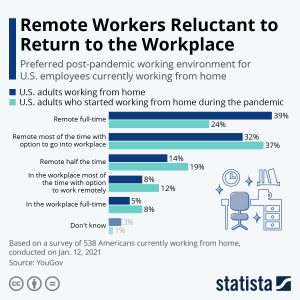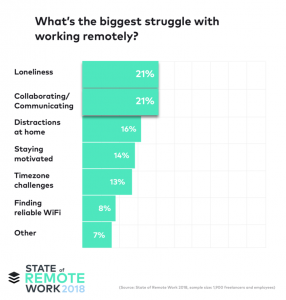The Ultimate Guide to Running a Remote Development Team

Web Design & Development
Great Teams make Great Things!
The above is especially true when you want to build a high-quality website or application. For your project, however, you’ll need highly qualified and competent professionals capable of working towards your goal, and in the present scenario, hiring remote developers is undoubtedly the best option.
BlueFace once predicted that remote working would compete with fixed office spaces by 2025, but the COVID-19 pandemic forced most organizations to go remote five years too early. This is undoubtedly true for remote software developers who just require a WiFi connection, a laptop, productivity apps, time tracking tools, and a mean set of skills to be successful.
The same trend may continue well after the pandemic since recent research confirms that 73% of all teams will have remote workers by 2028. According to another survey conducted by YouGov, most remote employees are reluctant to return to the workplace after the pandemic.

Thus, remote work isn’t just a temporary phase but is here to stay forever!
Whether you’re a company with a few remote developers or an organization planning to hire dedicated developers remotely to extend the existing in-house team, here is a comprehensive guide on hiring remote development teams and managing them effectively.
Highlights:
- What is a Remote Software Developer?
- The Advantages of a Remote Development Team
- Challenges of Managing Remote Employees
- How to Hire Remote Developers?
- How to Manage a Remote Team Effectively?
- Tools for Managing Remote Teams
- Wrapping Up
What is a Remote Software Developer?
A remote software developer is a full-time professional who performs the same tasks and duties as your regular in-house software developer. They understand a client’s unique requirements and then build, test, and improve upon software accordingly. The only significant difference between the two is that a non-remote software developer works in your physical office. In contrast, a remote software developer performs their duties from a different physical location, usually home. They may also work at a coworking space or a different client site.
Given the entirely virtual nature of their job, remote software developers face little to no physical, face-to-face interaction in their day-to-day tasks. However, they follow the same procedure that your in-house software developers do. They have a proper workstation, a fixed number of hours to finish their work, and a manager to report to within your organization. Additionally, they use virtual means of communication, such as phone, Skype, and email, to receive guidance and connect with other team members.
The Advantages of a Remote Development Team
If you have never employed a dedicated remote developers team, now is the time. From a boost in productivity to lower operational and infrastructure costs, the benefits of hiring remote development teams are tangible. Here are some of the rock-solid reasons why you should embrace the remote development team system.
#Increased Productivity
Not all software developers work best between 9 and 5! According to a study by TinyPulse, 91% of remote workers believe they’re more productive when working remotely, independently, and at the convenience of their preferred location. Another survey by CoSo cloud found that 77% of employees report greater productivity, and 52% are less likely to take time off when working remotely. Several other studies attest to the same.
This is perhaps not surprising because flexible hours boost employee efficiency. In addition, remote developers are free from office distractions and time-consuming commutes that are often tiring. They utilize this time and energy to stay productive during work hours.
#Lower Infrastructure Costs
To hire an in-house development team, you might have to spend hundreds of dollars setting up an excellent IT-based office infrastructure to attract talent and keep them engaged. On the other hand, when you deal with a remote developer, you don’t have to bear the whopping cost of your office infrastructure.
Instead, hiring a remote development team means developers are free to choose the place that makes them happiest and the most productive, whether it’s home, a coworking space, a coffee shop, or even a beach house. All they need is a reliable Internet connection and a laptop wherever they go – you don’t necessarily need to add these to your package either. You can use the saved money to expand your business, and remote developers get the freedom to choose their environment, so it’s a win-win for both.
#Reduced Operational Costs
When hiring in-house developers, you need to consider their training cost, salary, and extraneous facilities, such as commute, daily meals, insurance, bonuses, overtime, etc. These costs can really add up to the overall costs. However, when you hire a remote software developers team, all these expenses are in the domain of the professionals you hired. You can add some of these benefits to make your package more tempting, but you’re not obliged to do so.
#Access to the Worldwide Talent Pool
When you’re hiring employees who will be working at your company premises, you might have to restrict yourself to a limited pool of talent in the same region or city where your business is located. In other words, you would have to hire only local talents living close to your office or those you can convince to relocate to grab the offer. This limits your access to a large pool of more talented and suitable professionals for the job.
On the flip side, hiring remote developers allows you to employ non-local talent from anywhere in the world. You are no longer bound by geographical restrictions and can hire more trained and experienced developers from a global, almost unlimited talent pool. Maybe you are headquartered in California; you can still hire full-time remote employees from India!
#Better Employee Retention
A Gallup report found that 6 in 10 millennials are open to new job opportunities. One proven way to address this job-fickle workforce is by letting developers work in ways that better favor their style. According to a 2-year study by Stanford university, remote employees are on average:
- 9% more engaged in their jobs.
- 50% less likely to quit.
- Nearly 14% more productive than their in-house counterparts.
Another study by PGI states that 82% of remote employees have much lower stress than professionals who work in a traditional setup. This eventually keeps them satisfied with their job for longer and enforces a greater employee retention rate.
#Around the Clock Availability
We live in a time of instant gratification from notifications. If your website or application is down, people expect it to be up and running in minutes, not hours. This is hard to achieve with a traditional office setup where developers work only 9 to 5. Instead, you’ll need teams working the night shift to provide uninterrupted service and support to your global clients.
With a remote development team, the availability of developers in different-different time zones makes it possible for you to provide round-the-clock service and support to your customers. Even if all your remote developers belong to the same country, you can select some members to work split shifts to have an around-the-clock team that provides 24-hour customer service and support. Thus, just by going remote, you can easily get a 24h work-day to ensure continuous development, integration, and deployment of your project.
Challenges of Managing Remote Employees
Along with several benefits, working with a remote development team also comes with a set of challenges. Some of the biggest challenges that you might face are:
#Lack of a Company Culture
Creating a positive company culture that reflects your business’s values takes time to cultivate and requires hiring the right developers and fostering seamless communication. Company culture is the lifeblood of any organization, and most of the time, it gets developed without much effort from the manager or company owner. However, that is not the case with remote development teams.
Creating a healthy organizational culture for remote developers requires proper planning and effort, much like working on a project. It starts from the top with how the business owner or manager operates and interacts with remote developers. In other words, everyone in your company should strive to create a culture that doesn’t treat distant developers as “other.” For example, you can offer remote team members virtual perks, like gift cards and gym stipends, instead of in-office perks that they can’t consume or partake in.
#Tracking Work and Productivity
When you’re working in a physical office, tracking the productivity of your in-house developer is effortless-all you need to reach out to the particular team member to get updates. However, monitoring and tracking the productivity of remote development teams is an entirely different game.
How do you track and monitor your remote employees’ productivity without micromanaging or invading their privacy? How do you prevent remote employee burnout while developers are tempted to work overtime? The answers to these questions are often unclear to most managers. For this reason, they are required to discover ways to track productivity for remote employees.
#Building Trust Towards Remote Employees
One of the most common concerns most companies have about remote working is, can I trust my employees to do their job remotely? While managers worry that remote employees aren’t accomplishing work, remote developers have various concerns, including whether or not they’ll be paid on time. The lack of mutual trust between both parties leads to a lack of cohesion amongst employees.
On the other hand, when you have daily face-to-face interactions, trust is automatically created, and you can quickly bond with your in-house developers. You can earn the same level of trust with a remote development team by being transparent about:
- Pay rate
- Working hours
- Payment timelines
- Project expectations
- Status updates on projects
When you’re working with a remote team, focus on outcomes and not on activity. Avoid micromanaging if deadlines are being met and desired results are clearly laid out.
#Scheduling Difficulties
While most companies report higher productivity when working with remote development teams, there can be a few hiccups when scheduling a phone or video call due to the different time zones. When scheduling meetings, you need to find a time that works for everyone, and this requires knowing where your remote developers live and what their schedule is.
Some time zone differences are minimal, but scheduling can be troublesome when working with people on other continents. However, you can use various online tools to make video conferencing, scheduling a call, or meeting with remote development teams easier. Another great idea to ensure that remote developers will be readily available is paying them to attend virtual team calls and meetings.
#Facilitating Seamless Collaboration and Communication
Effective and efficient communication is the key to success when you are working with a remote development team. According to a Buffer study, remote employees cited communication and collaboration as their biggest struggle.

Email alone is insufficient when it comes to facilitating proper collaboration and communication among team members. Instead, you can leverage modern technology to bridge the communication gap between remote developers. An internal team communication tool like Slack is a great way to foster two-way communication between remote employees. An added advantage of using this tool is that future employees can also find the answers to frequently asked questions.
#Threats to Data Security
Data security is a paramount concern when running remote teams, and the lack of security training among newly remote developers often increases the risk of cyberattacks. Additionally, the remote staff can misuse confidential data or intellectual property if you don’t implement a data security protocol.
A recent study by IBM found out that 47% of newly remote workers are concerned about impending cybersecurity risks. The situation worsens if remote developers use bad practices such as connecting to unsecured wireless access points or not using a data encryption method. Because of all these, securing sensitive customer data against intrusion or theft is another challenge of running a remote team.
How to Hire Remote Developers?
Hiring a perfect remote development team requires some preparation. Here is a step-by-step process that you can follow to hire remote software developers.
Step 1: Describe Your Needs Clearly
The first step to hiring remote developers is to figure out all your project requirements and write a targeted job description accordingly. Ideally, your job ad should include:
- Job title describing the role.
- Brief description of the position.
- Details of your project.
- Technologies required for software development.
- Job conditions (part-time, full-time, or hourly).
- Payment criteria (daily, weekly, or monthly).
Put out accurate and precise information about the vacancy to hire an ideal candidate.
Step 2: Choose a Hiring Destination
Although you can hire remote developers from anywhere globally, some parts of the world are best known for hiring experienced and qualified remote employees. These are Asia, Africa, South America, and Eastern Europe. In terms of countries, the top destination to outsource web and mobile app development are:
- United States
- India
- Brazil
- Ukraine
- Canada
To decide which country or region to choose, compare time zone differences, tech talent pools, and rates in each destination.
Step 3: Post a Job Listing
Once you find the preferred location for your remote development team, spread your job offer to different platforms. Post your job listing on:
- Your social platforms
- Freelance marketplaces
- Job boards
- Platforms for hiring dedicated teams, such as Clutch and GoodFirms.
Additionally, you can post your job listing on remote developer networks, such as RemoteOK, WeWorkRemotely, and FlexJobs.
Step 4: Conduct Video Interviews
Once the applications start rolling in, shortlist candidates with the technical skills you need and invite them for a face-to-face video interview. Here are some questions you can ask your candidates:
- Do they already have any remote working experience?
- What challenges do they face while working remotely?
- How do they overcome those challenges?
- What software do they use for team building?
- How do they communicate with the manager and teammates?
Apart from these questions, you may also ask them some technical questions to judge their proficiency.
Step 5: Hire Remote Developers and Work Happily Ever After
After that, spend some time shortlisting the best candidates based on the following:
- Technical skill set
- Location
- Cost
Once you have shortlisted several candidates, take some time to vet their profiles. Consider these things:
- References
- Past projects
- Website or portfolio
Finally, select the best candidate that perfectly fits all your requirements.
How to Manage a Remote Team Effectively?
Managing a remote development team is nothing complicated if you follow these best practices:
#Set Clear Expectations Early
Managing remote developers starts with setting clear expectations in the beginning. Set realistic expectations for:
- Work hours
- Timely meetings
- Availability
- Scheduled meetings
- Communication system
- Respond to email
- Key projects and deadlines
Being transparent with remote employees will keep them focused on their goals.
#Have a Daily Check-In
Do daily one-on-one face-to-face check-ins via video conferencing. Keep it casual and stick to minor updates. You can use services like Google Meet or Zoom to make this relatively easy. The purpose should be to:
- Get updates
- Provide the feedback
- Set the agenda
- Provide resources your remote developers need.
At first, this should be every day!
#Be Flexible
Your remote developers will expect some flexibility in their working hours and, for sure, you should give them the freedom and flexibility to work as per their preferred schedule. This will help them maintain consistency and stay productive. Whether your remote developers choose to put in their hours in the first half or second half, it is okay as long as the deadlines are met and the work is of high quality. Although a concrete plan is a must, you should stay flexible in adjusting strategies to meet new circumstances.
#Focus on Outcomes, Not Activity
When your team is distributed across different locations, it becomes challenging to micromanage employees. Therefore, you shouldn’t be trying to manage every aspect of the work done by a remote team. Instead of focusing on activities or hours worked, focus on the outcomes and measure your remote development team accordingly.
#Take Advantage of Technology
Don’t forget to utilize today’s technology to organize remote work, keep your team productive, and bring everyone on the same page. In the next section, you’ll find some best remote team management software you can use to communicate and collaborate with your teams effectively.
Tools for Managing Remote Teams
There are a variety of tools you can use to manage your remote development team effectively. Here are the most popular ones:
- Asana
- Basecamp
- Buffer
- Slack
- Zoom
- Trello
- Google Meet
- Microsoft Teams
- When I Work
- GoToMeeting
You can use any combination of these tools to communicate and collaborate effectively with your remote development team.
Wrapping Up:-
You cannot ignore the benefits of hiring a remote development team as the notion of a workplace continues to shift due to technological advancements. For startups, it is especially beneficial since the initial days may feel like walking on shaky ground due to budget crunches. Although managing remote development teams presents several challenges, one can easily overcome them using appropriate technologies and good management practices.
Altogether, hiring remote developers is as efficient as employing an in-house development team. Benefits like increased productivity, massive savings, and access to a large pool of talent make hiring a remote team an ideal solution for every company out there. If you’re also looking to hire a remote development team, talk to our experts now, and let us be your innovation partner!


